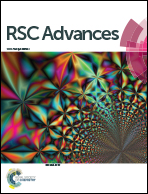Structure and properties of the poly(vinyl alcohol-co-ethylene)/montmorillonite-phosphorylated soybean protein isolate barrier film
Abstract
The present work developed a novel poly(vinyl alcohol-co-ethylene)/montmorillonite-phosphorylated soybean isolate protein (EVOH/MMT–PSPI) nanocomposite barrier film via a two-step mixing process and solution casting, and estimated its properties for food packaging. PSPI was first used as an intercalating agent to achieve the highly intercalated MMT–PSPI nanocomposites. The structure of EVOH/MMT–PSPI was proposed and confirmed. The structure of MMT–PSPI was associated with the level of MMT loading. An appropriate incorporation of MMT–PSPI resulted in a remarkable enhancement in the mechanical (tensile strength/Young's modulus) and barrier properties of the EVOH/MMT–PSPI films. In comparison with the neat EVOH film, an incorporation of MMT–PSPI at 3 wt% could improve the oxygen and water vapor barrier properties of the nanocomposite films by 73.5 ± 3.1% and 61.3 ± 4.1%, respectively, meanwhile, the tensile strength and Young's modulus reached 48.2 ± 2.4 MPa and 192.4 ± 4.2 MPa, the elongation at break still kept high at 225 ± 9.25% and the light transmittance of the films didn't obviously change. However, excess MMT–PSPI loadings gave rise to a reduction in those packing properties due to the aggregation of MMT. Additionally, the intercalated MMT nanoplatelets from MMT–PSPI in the EVOH matrix could significantly suppress the moisture-derived deterioration in the oxygen barrier property.


 Please wait while we load your content...
Please wait while we load your content...